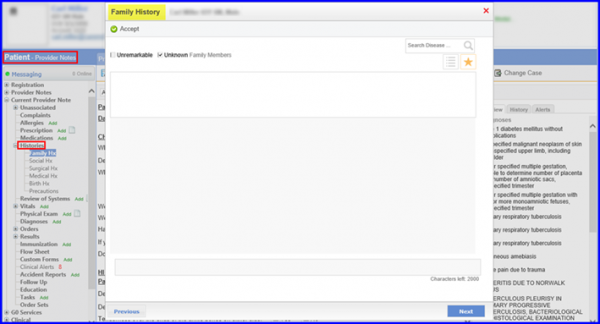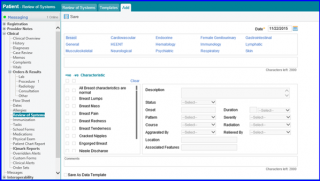How History Type is Determined?
The History Type has three components:
- History of Present Illness (HPI)
- Past Medical, Family, and Social History (PMH, FH, SH)
- Review of Systems (ROS)
History of Present Illness (HPI) In the CureMD application, Complaints section of the provider note is used to refer to the history of present illness (or HPI) for any patient. Complaints section can be accessed via the Clinical Component of the patient profile or the Provider note.

HPI elements are used to fully describe the clinical condition:
- Duration
- Severity
- Location
- Quality
- Timing
- Context For lower HPI level
Users can document any one to three of these elements. To reach a higher level, four or more elements need to be covered in the complaints section. Past, Family, and Social History (PFSH) There are three components of the PFSH:
- Past history
- Family history
- Social history
To view the history of the patient, go to Patient, Clinical and then click on the History link. User can also get to the same screen via the Histories component on the Provider note screen.

Review of Systems (ROS) The ROS tab in the application allows clinicians to take an inventory of the overall body system by documenting past or present signs or symptoms that are reported by the patient. Common ROS components include:
- ENT
- Cardiovascular
- Respiratory
- Gastrointestinal
- Musculoskeletal
- Neurological
- Psychiatric
- Endocrine
- Hematologic/lymphatic
- Allergic/immunologic
Each of these components is called a System and the checkboxes that user selects while documenting the patient’s condition against each system are called the sub-systems. In order to reach a certain level of E&M codes, user needs to document a given number of systems and all or some of its corresponding sub-systems. To view ROS for any patient, go to Clinical or Provider note and then click on the ROS link in the left navigation panel.

Based on the level of documentation in these three clinical components, the system determines the Type of History. To read more about how the History type is determined please click on “How is History type determined?
